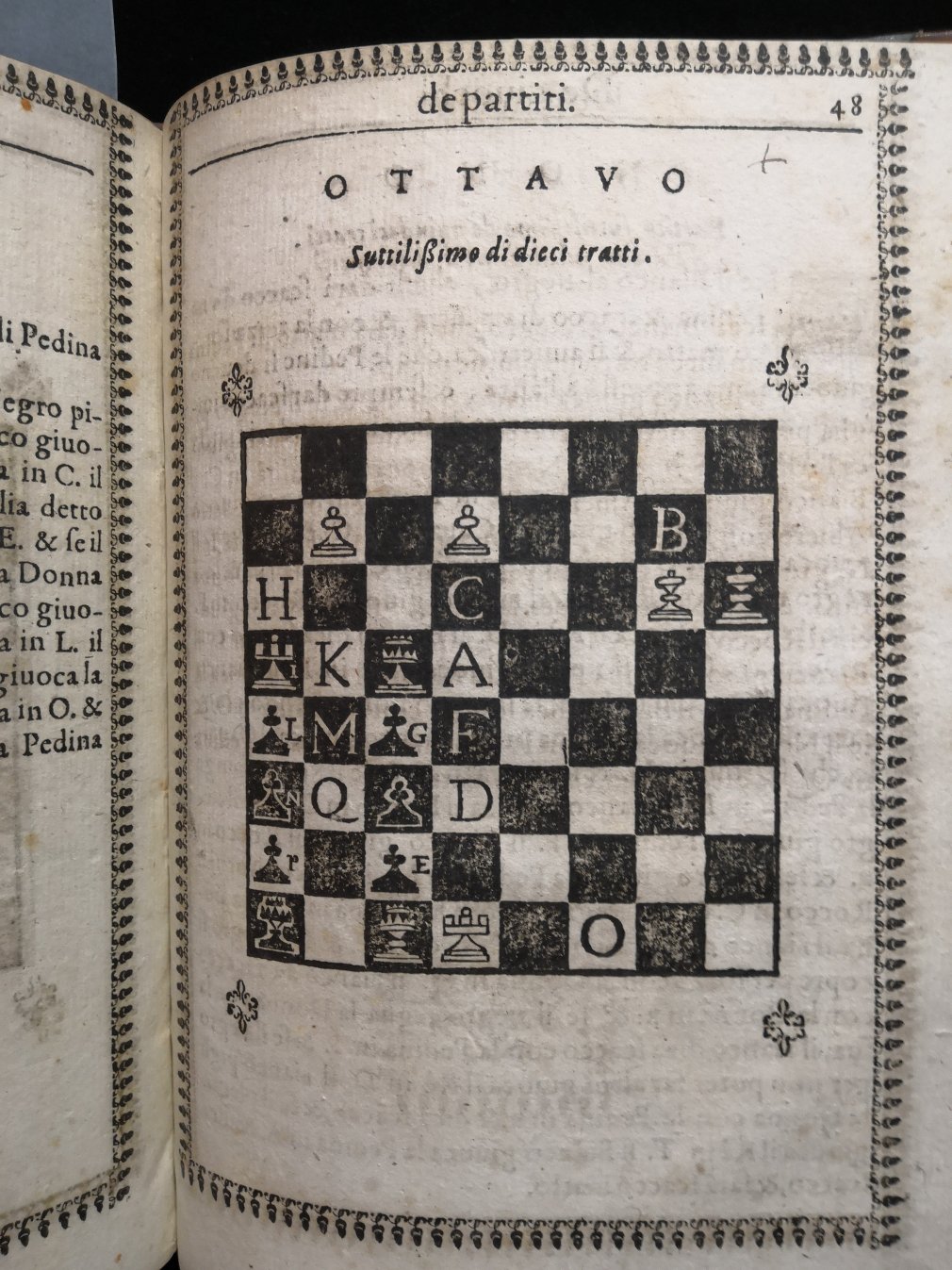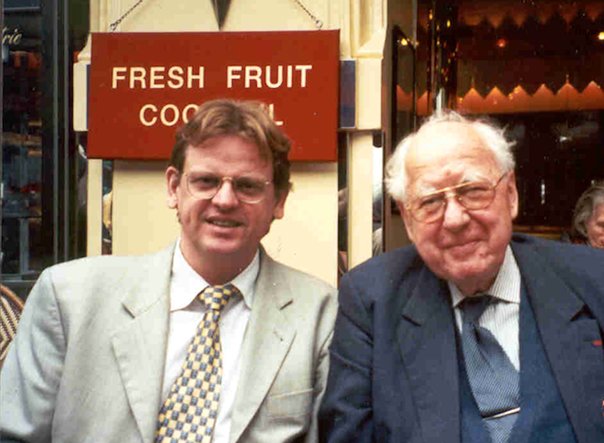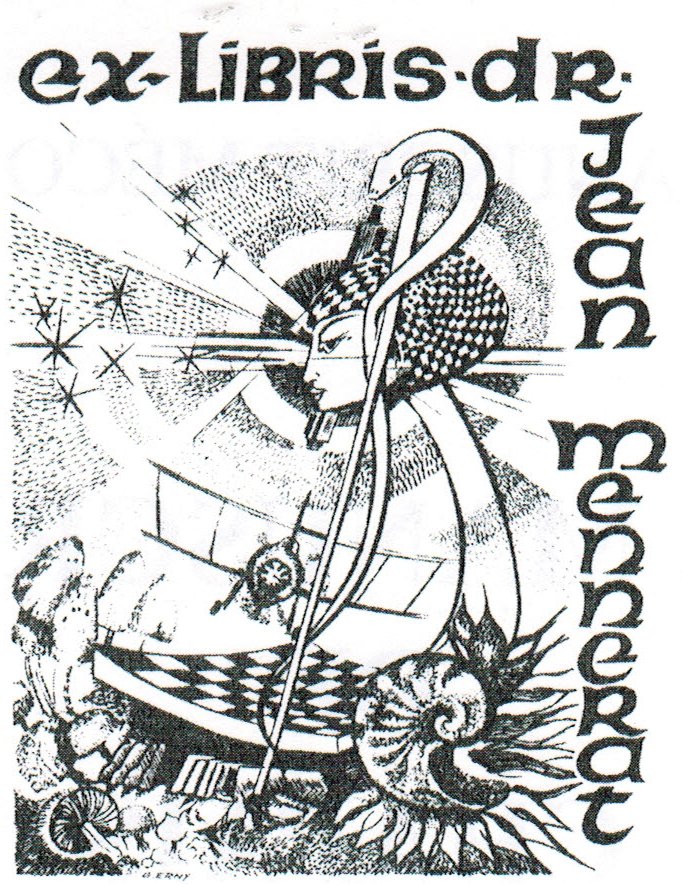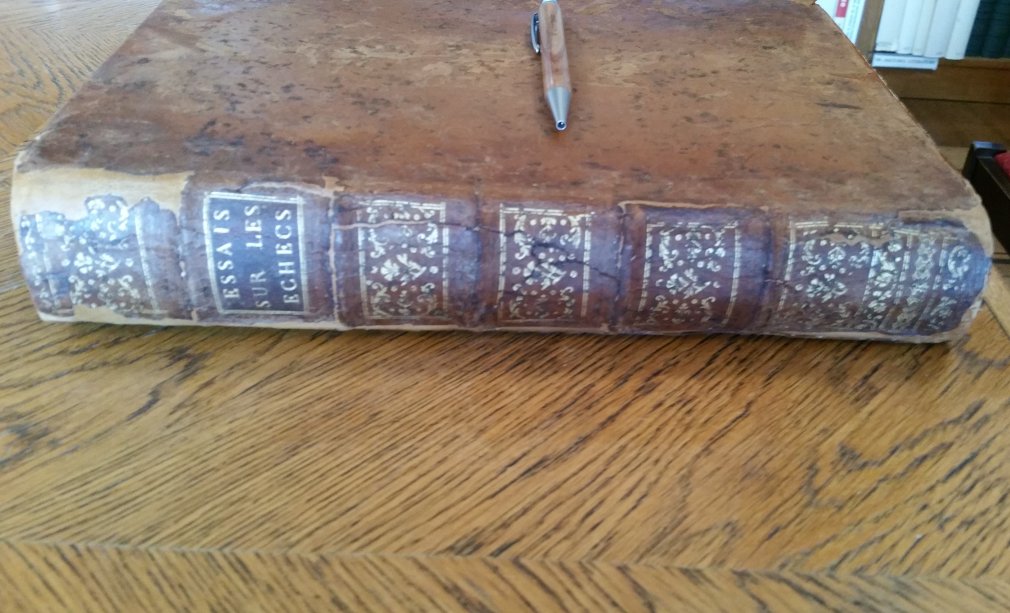On 2 September members of the Chess History and Literature Society (formerly Ken Whyld Association, KWA) met for their annual meeting in Belfort, France, one of the magical places for chess historians. The Belfort City Library administers the estate of Dr Jean Mennerat (*1917-=2007), the most important French collector of chess literature. In the course of his life, Mennerat collected about 27,000 books and about 1,000 periodicals on the royal game, which are now preserved for posterity in Belfort.

Prof. Dr. Frank Hoffmeister. | Photo: ©Herbert Bastian
After a short welcome in the City Library by Prof. Dr. Frank Hoffmeister, who replaced the Dutchman Bob van de Velde as President of the CH&LS last year, curator Clémence Tariol introduced the Mennerat Collection in a PowerPoint presentation. Mennerat began collecting in 1936. The dominant language of the works is English with about 6,000 titles, followed by about 4,100 German-language works. It is surprising that "only" 8% each of the works are in French, Spanish, Dutch and Slavonic. Rarer languages such as Swedish, Hebrew, Maori and Esperanto are also represented. The actual collection is located elsewhere and could not be visited. However, members were able to examine a selection of some particularly valuable items from the collection.

A look at the rare book by Gianutio (1597) | ©Herbert Bastian
After Clémence Tariol, Dr Harald Balló (*1955) gave a passionate and very personal talk about his long friendship with Jean Mennerat and the elements that united them beyond their passion for chess books. Both grew up in Wiesbaden, were married to a French woman and had four children each. In addition, Tassilo von Heydebrand und der Lasa lived for a long time in Wiesbaden, who had acquired the Chapais manuscript dating from about 1780 in 1854 or 1855 and reported it to posterity. It was Jean Mennerat who first rediscovered it in Kórnik in about 1990, and together with Harald Balló he made it known at the Lasa Conference in Kórnik in 2002. Harald Balló spread the word about it on his website, which is well worth reading, and that is where I first learned about it in about 2008.

Dr Harald Balló and Dr Jean Mennerat in Paris in 2001. | Photo: ©Harald Balló
Mennerat was a very versatile person who fought in the French Resistance against the Nazis during the Second World War. He was a doctor by profession. His hobbies are immortalised in his Ex Libris, as Harald Balló explained.

The Ex Libris of Jean Mennerat
The staff of Asclepius with the snake indicates the profession, the chessboard the dominant hobby. In addition, Mennerat's heart beat for flying, and the mushrooms and the snail shell reveal the gourmet.
After handling some technical points such as the annual report (Hoffmeister), website (Leconte), finances (Serruys) and the ToBiblion database (Skjoldager/Hoffmeister), we went into the lunch break with a well-organised shared meal.
The next highlight was not long in coming. Henrik Lindberg, assistant professor for economic history in Stockholm, reported in an extremely interesting lecture on the life story of the Swede Folke Røgard (1899-1973), lawyer and FIDE President from 1949-1970. Those who are interested in chess history during the Cold War can already look forward to the hopefully imminent publication of Henrik's book, as the title of the lecture reveals: Folke Røgard: organiser of modern world chess in the shadow of the cold war. Røgard was a well-known personality and made headlines, among other things, as the lawyer of the famous Swedish actress Ingrid Bergman (1915-1982), who was seen in the 1942 film Casablanca alongside Humphrey Bogart (1899-1957), incidentally also a chess enthusiast. Røgard got the FIDE World Championship cycle off the ground when the first interzonal tournament went to Saltsjöbaden in Sweden (1948). Through his good contacts on both sides, he also repeatedly succeeded in bringing the Soviet Union and the USA together, for example by preparing the bilateral match of 1955.
I was then given the honour of reporting on the state of research on the Chapais manuscript, Mennerat's most important contribution to chess history. The chess-historical significance of the work is now well understood and will be described in my forthcoming book on it. Chapais coined the concept of opposition, which is extremely important for endgame theory, and was the first to use the multifunctional king movement (as I call it) in a whole series of examples, which only became generally known through the famous Réti study of 1921. Chapais was the first to study the endgame king and two knights against king and pawn, which Alexei Troitsky (1866-1942) later used as a model, and probably communicated with André Danican Philidor (1726-1795) about the endgame king, rook and bishop against king and rook. My investigations of various kinds have used a variety of clues that Chapais could be a pseudonym and in fact the famous French mathematician Gaspard Monge (*1746-=1818) is hiding behind it. Even if there is no 100% proof, the weight of circumstantial evidence is, in my opinion, overwhelming.

The Chapais manuscript in Kórnik (Poland) | Photo: ©Herbert Bastian, 2018
An exciting day at the City Library ended with a lecture by Dr Jurgen Stigter on classical works on games that were popular at the time. Jurgen used the example of the game of draughts to show that one cannot always draw reliable conclusions about the spread of the game from the content of the books, because the demonstrably popular game of draughts was not mentioned in some works.
Next year is the 100th anniversary of FIDE, which was founded on 20 July 1924 in Paris at the instigation of the Frenchman Pierre Vincent (*1878-=1956), who was then a member of the National Olympic Committee in France. Due to the Summer Olympiad taking place at the same time, the Chess Olympiad was moved to Budapest for the coming year. Presumably, the CH&LS will follow FIDE to Budapest for its next annual meeting in 2024, certainly also an attractive venue.
A cooperation with FIDE could be agreed with Willi Icklicki (*1955). Willi is Belgian, he lives in Israel. As chairman of the FIDE Chess History Committee, he is responsible for the preparation and design of the historical part of the FIDE anniversary.

Group photo of the CH&LS meeting on 2.9.2023 in Belfort. On the far right is Willi Icklicki. Second from the left is Dr Jurgen Stigter from Amsterdam, who has a similarly important collection of chess literature as Lothar Schmid (1928-2013) in Bamberg. To his right is George Bertola, the editor-in-chief of Europe Échecs.





























